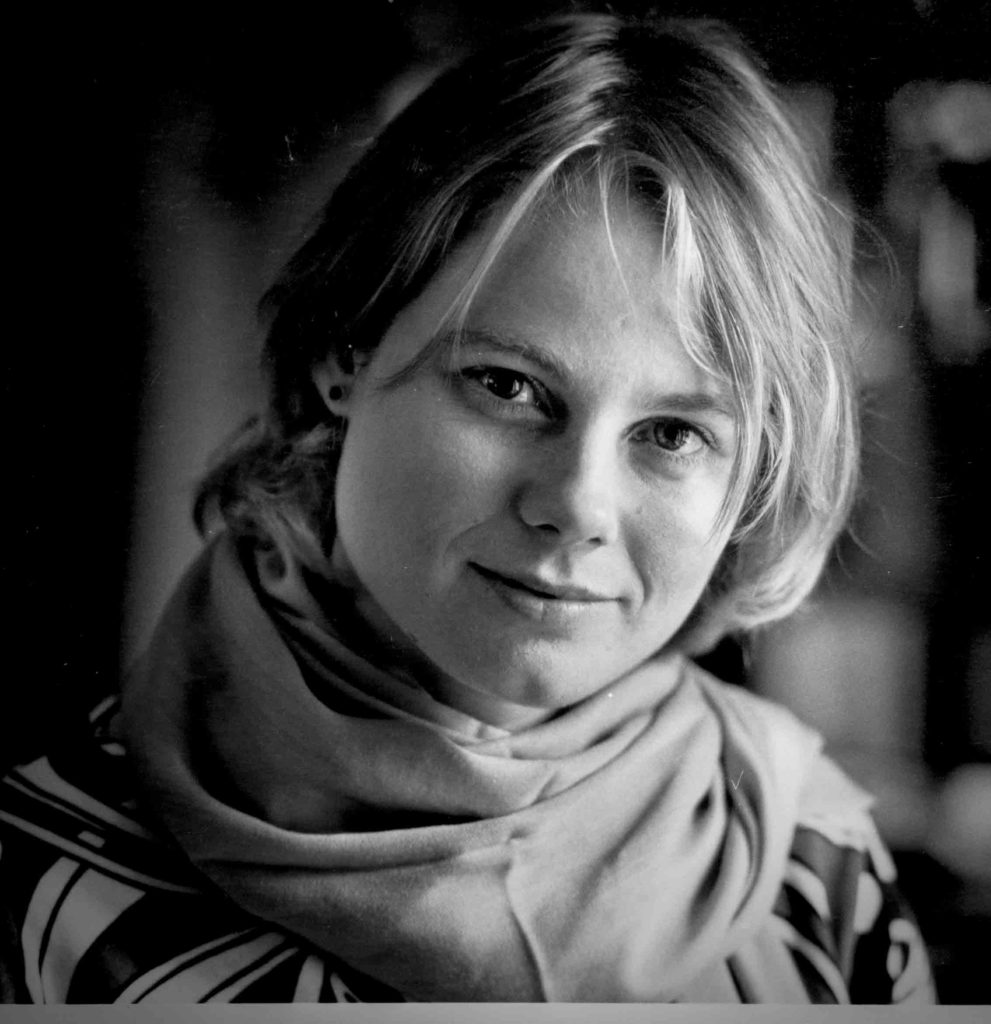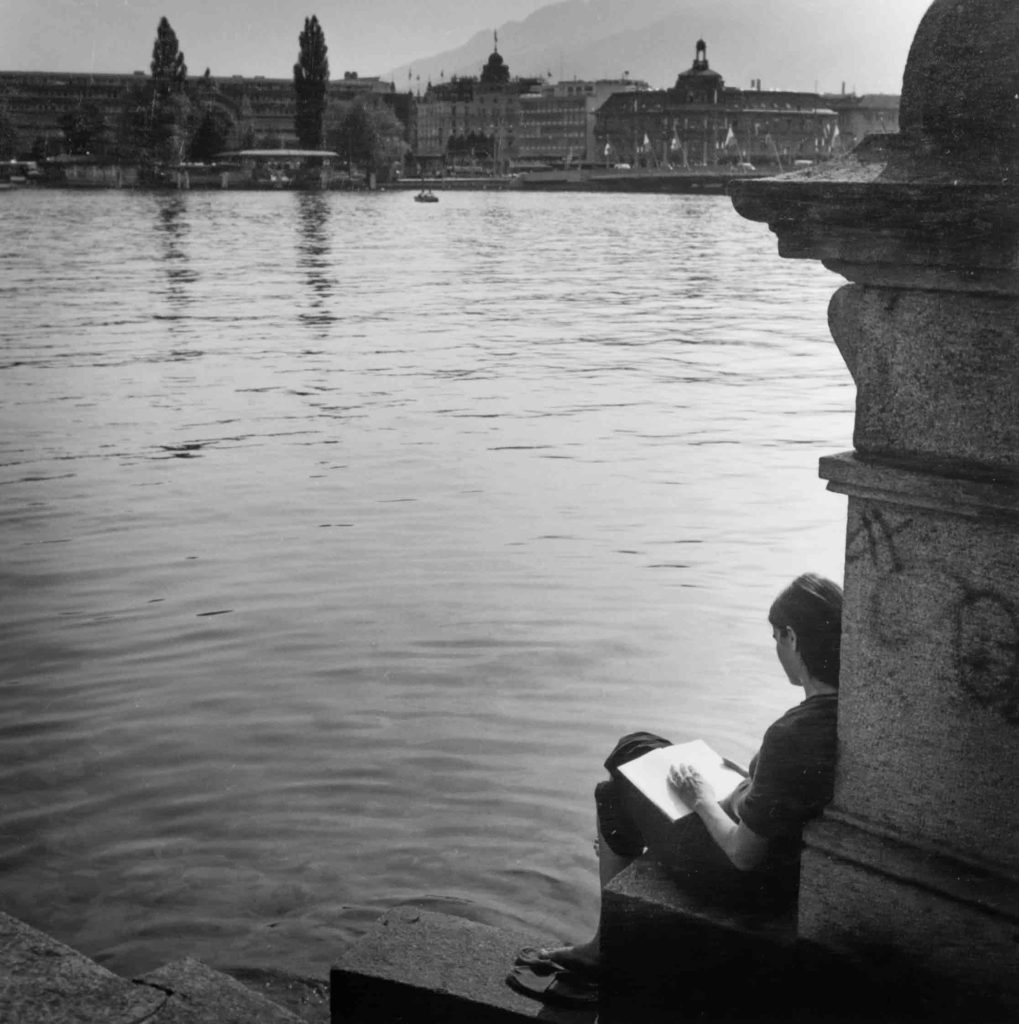Film and darkroom photography offer satisfaction not found in other modes of image capture. It has a meditative quality. Getting good shots with film demands a high degree of effort and sustained attention.
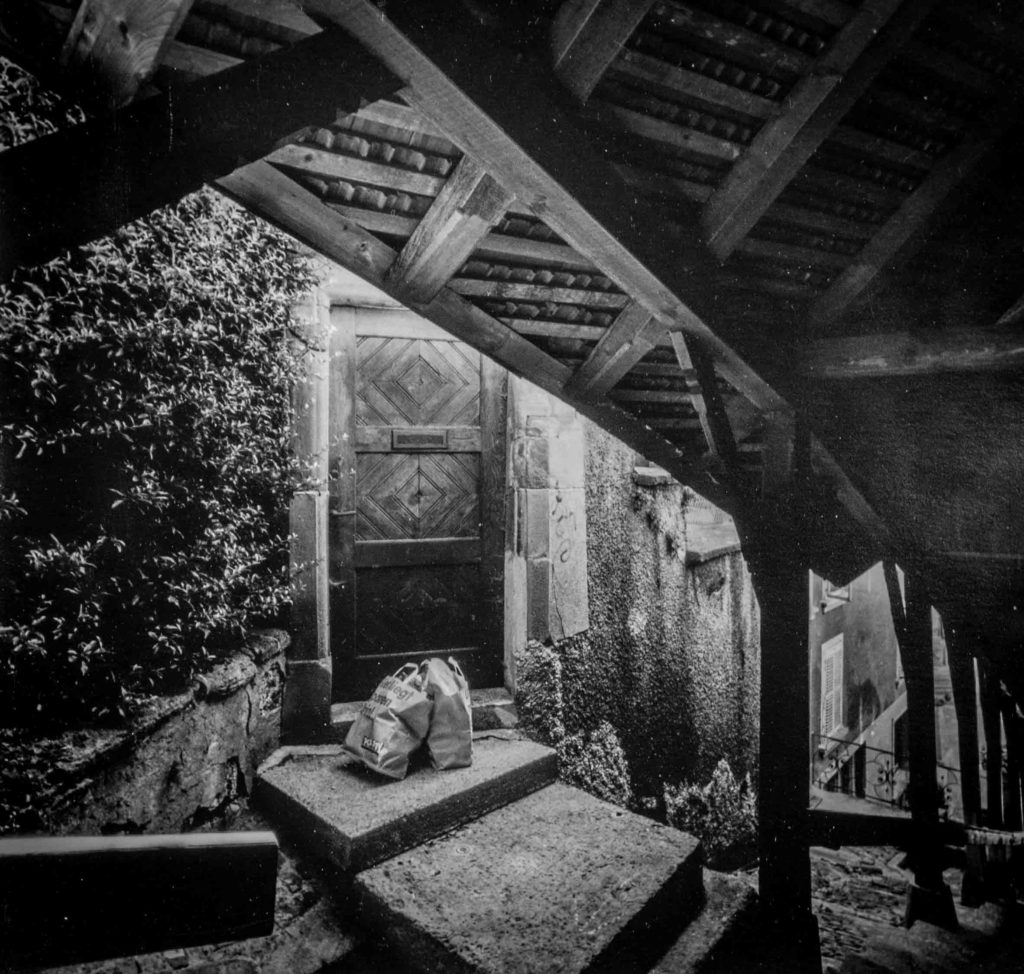 What caught my attention were the bags of groceries, a mystery making me wonder what kind of home was behind that door.
What caught my attention were the bags of groceries, a mystery making me wonder what kind of home was behind that door.
Before shooting, you must manually set the exposure and focusing which, with practice, can become effortless, reflexive. Film makes you aim to make each shot count, part of which is being thoughtful about composition. (Who wants to waste time printing a negative which is poorly composed?) Low light can be a challenge, but remedied by stablizing your camera on a tripod, an irreplaceable tool which — mysteriously — also leads to better composition.
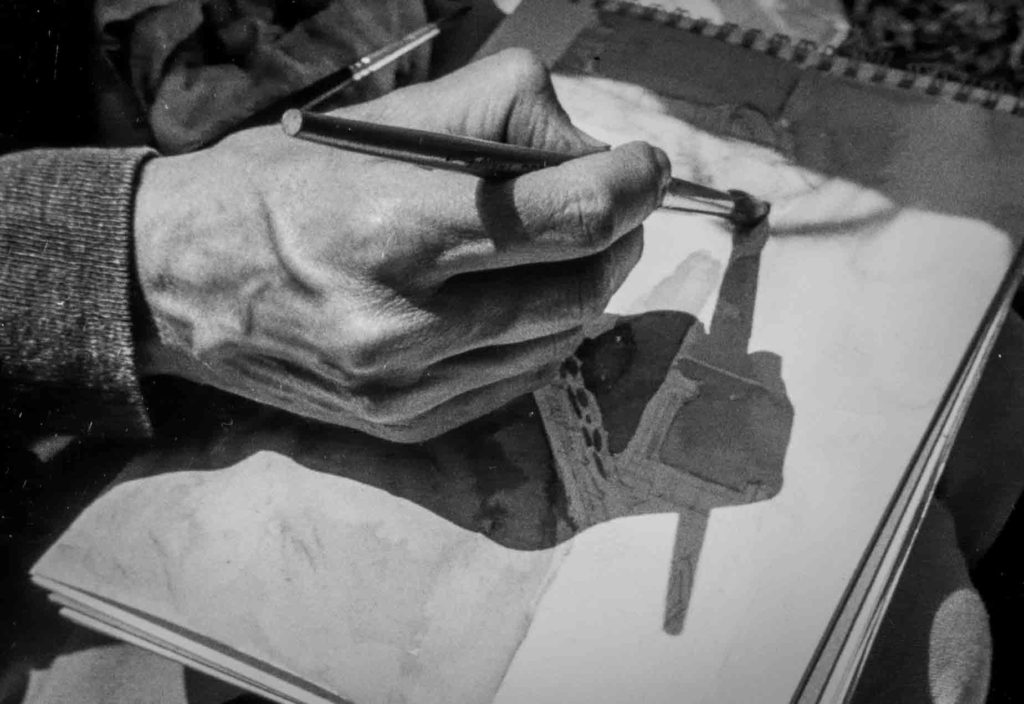 The human hand has been described as a “marvel of nature”.
The human hand has been described as a “marvel of nature”.
Developing negatives is a skill unto itself. The act of selecting which negatives you’ll print and how you’ll print them requires time and careful consideration. Printing one negative can require several hours of work, so that negative had better be worth it. A film and darkroom photographer is part chemist, part artist, and part craftsperson — all rolled into one.
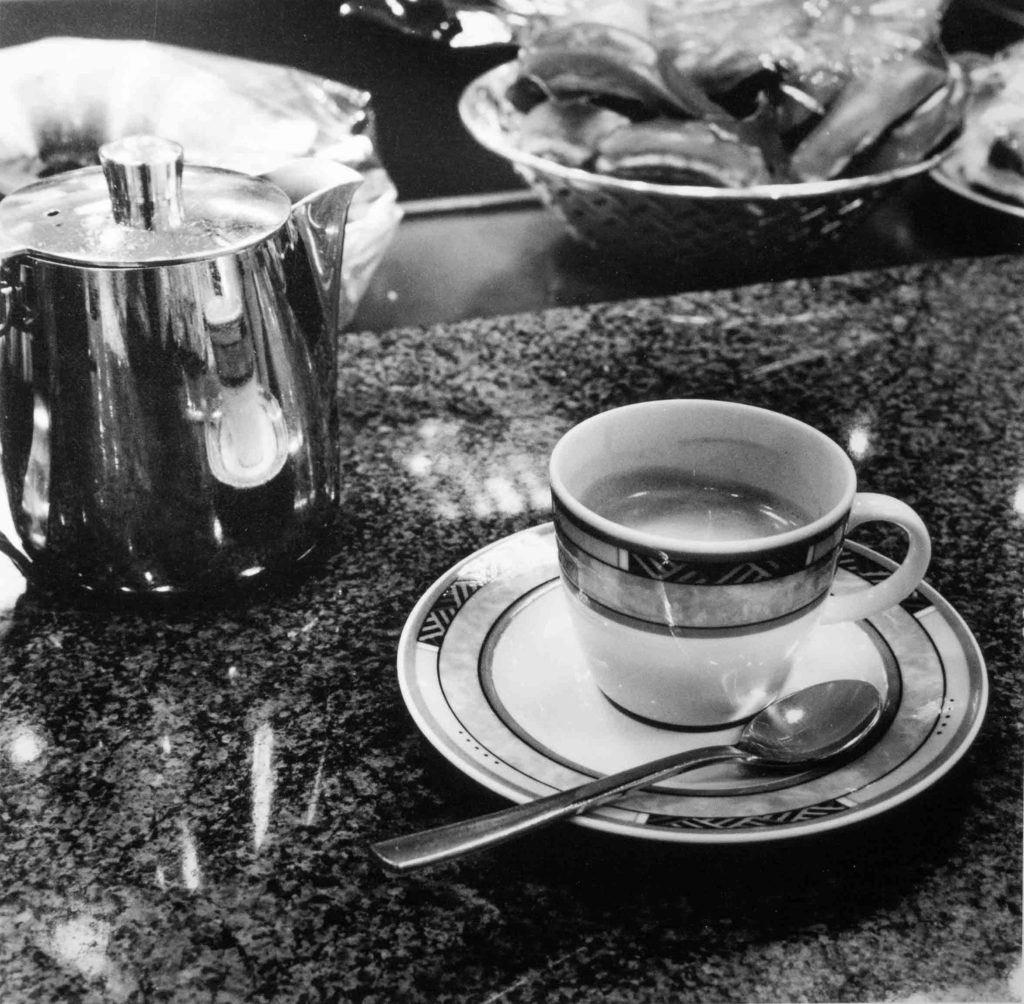 Here we have a good example of the richness and three-dimensional look of a gallery grade silver gelatin print. That espresso is about to float off the page!
Here we have a good example of the richness and three-dimensional look of a gallery grade silver gelatin print. That espresso is about to float off the page!
We’re really talking about a labour of love. I can print for hours in my darkroom, emerging afterwards feeling like I’ve been away on vacation. This is a huge mental diversion. Nobody disputes the enormous benefits of digital capture and editing; I’ve been there, I’ve done it. But for those rare and dedicated ones, film and darkroom offer an unmatched opportunity for creative involvement and meditative absorption.
Here is a Rolex trained watchmaker in Toronto. The lighting was soft, requiring a tripod. Curiously, with a tripod mounted camera I sometimes see possibilities I would otherwise miss. Maybe it’s because I take more time evaluating what I see through the viewfinder. In this example, as I slightly adjusted the aim of the camera and noticed the jeweller’s screwdrivers on the right, immediately I knew they had to go in this shot. A slight adjustment can make all the difference.
Finally, the pot of gold: there’s nothing like the deep satisfaction of creating a beautiful, richly toned, silver gelatin print.
Using a tripod here freed me to use one of my hands to hold a light disc for adding fill light.
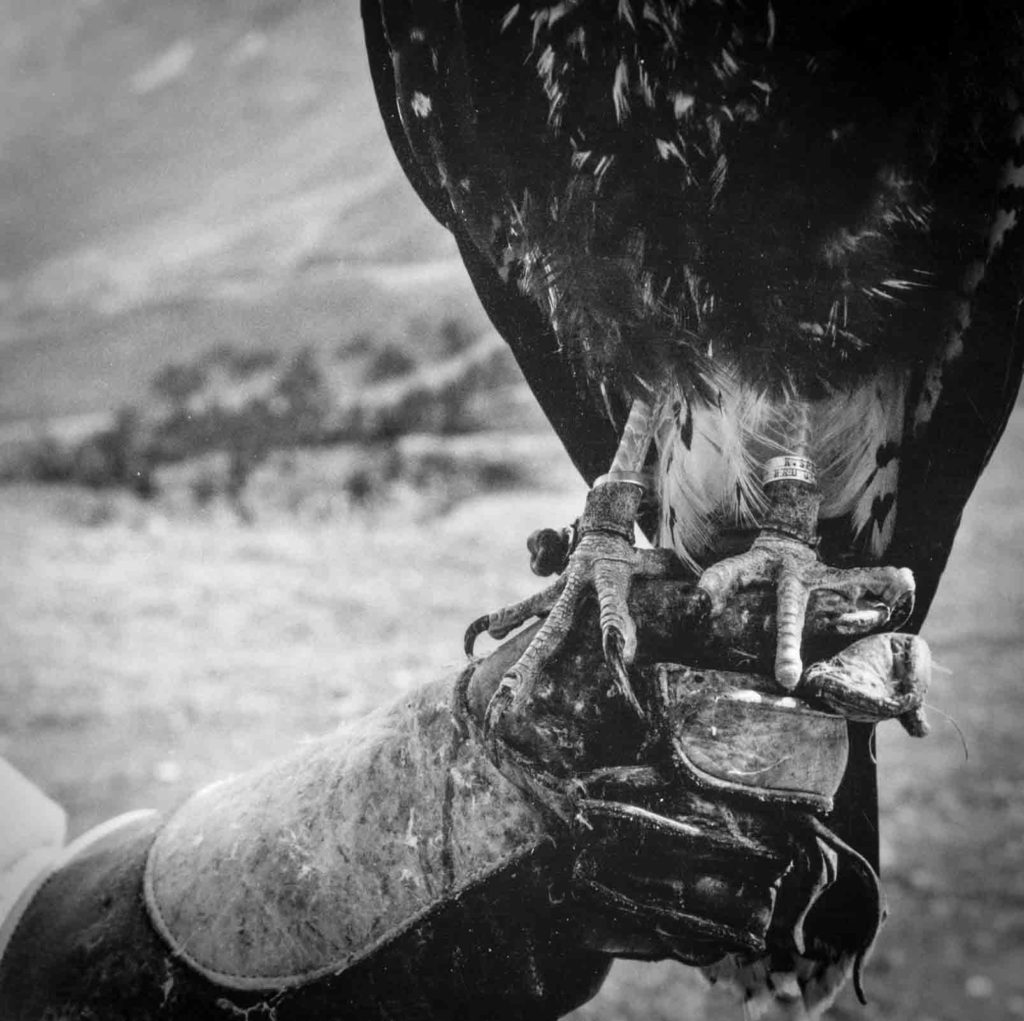 An American red-tail hawk perched on her falconer’s heavily leathered arm. It’s true: the imagery of black-and-white often creates the more striking image.
An American red-tail hawk perched on her falconer’s heavily leathered arm. It’s true: the imagery of black-and-white often creates the more striking image.
This reminds of what Alfred Eisenstaedt said: “There are good photo possibilities everywhere.” Similarly, Freeman Patterson described photography as “the art of seeing”: just “let go” to see the beauty all around us.
Neil Bixby’s website: https://neilbixbyphotography.webnode.com



